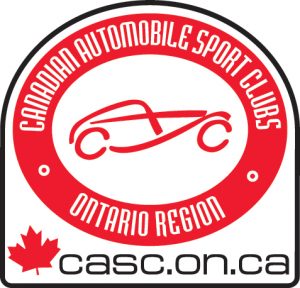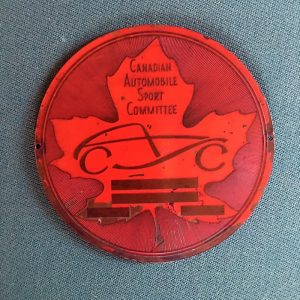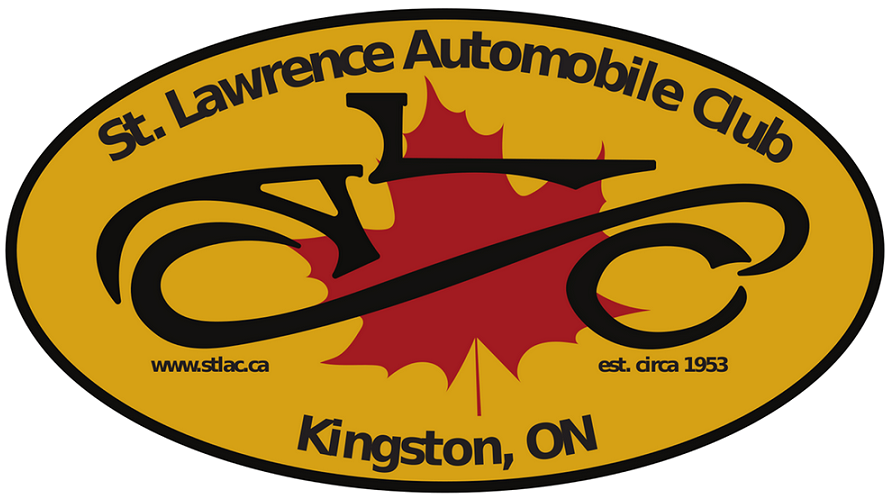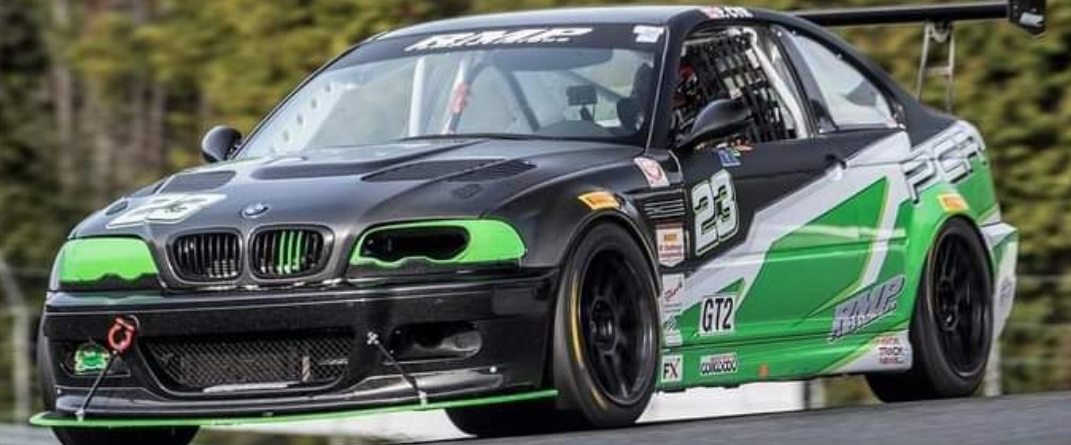Over-all History of Motor Sport in Ontario
Using information from both the CASC-OR and ASN Canada FIA web sites
Before WW2, organized auto racing in Ontario was limited to stock car races held at a board track at Toronto’s Oakwood Stadium as well as some dirt track racing. Motorcycle races were held on Wasaga Beach and in the Bridal Path area of Bayview Avenue in North York.
In order to get some control over what was happening, three independent car clubs got together in Kingston in 1951 to found the Canadian Auto Sport Committee. There were many aims and objectives detailed at this first meeting, but the primary reason was to organize competitions in Ontario and eventually, Canada. The name was changed to the Canadian Automobile Sports Clubs (acronym CASC) in 1958 when Regions across the country were developed. In 1967 CASC was recognized by the FIA (Federation International De L’Automobile, based in Geneva, Switzerland), as the governing body of motor sport in Canada and became a full international member.
However, in the late 1980’s, there was a reorganization of motoring activities in Canada in conjunction with the FIA. As the FIA recognizes two motoring delegates within each country, one for touring and one for sporting, the CAA (Canadian Automobile Association) remained for touring and a new National Sporting Authority was given the sporting responsibilities. This new motoring group came into being in 1991 to supersede CASC (which was still run primarily by a group of volunteers). The argument being that a dedicated organization was needed to run the professional side of Canadian Motorsport and volunteer groups under them could take care of amateur racing. The organization was ASN Canada FIA, and it consequently reorganized amateur motor sports within Canada into 5 territories as based upon geographical areas:
- Canadian Association of Car Clubs (CACC) – British Columbia
- Western Canada Motorsport Association (WCMA) – Prairie Provinces
- Canadian Automobile Sport Clubs Ontario Region (CASC-OR) – Ontario
- Federation Auto Quebec (FAQ) – Quebec
- Atlantic Region Motor Sports Inc. (ARMS) – Atlantic Canada
Ontario was the only territory to keep the CASC designation. CASC-OR now is an association of 30 provincial member clubs. It sanctions events, licenses competitors, sets safety standards and handles administrative matters for Ontario. CASC-OR clubs organize amateur Road Races at Mosport and Shannonville, Rallies, Ice Races in the winter, as well as Solo I and Solo II Championship events. In addition, the majority of the timers, corner marshals and safety personnel at events such as The Toronto Champ Car Race are CASC-OR members.
St. LAC History
At that historic meeting in Kingston in 1951, the three clubs represented were the Ottawa Light Car Club (OLLC), British Empire Motor Club (BEMC) and St. LAC. Jack Luck, who was an industrial designer at the Kingston Alcan Laboratories, was among the St. LAC members present.
Jack Luck devised the rather clever logo for St. LAC of an outline of a car using the letters S, L, A and C. He subsequently used the same design concept for the CASC logo viz:
  |
 purchased the first Porsche 356 in North America from Kingston’s very own Campbell’s VW in 1956. This is what brought Eric our way. It was a most interesting lunch at the home of Danby Crowder which set us off on a trip to meet the son of the head mechanic at Campbell’s and now owner of Universal Auto here. Needless to say, this connection led to much story telling and provision of a genuine 356 Owner’s Manual from 1956! There’s more to this story, however. It turns out that Marshall was one of the few who joined Jack Luck to form today’s Sport Governing Body now known as CASC.
purchased the first Porsche 356 in North America from Kingston’s very own Campbell’s VW in 1956. This is what brought Eric our way. It was a most interesting lunch at the home of Danby Crowder which set us off on a trip to meet the son of the head mechanic at Campbell’s and now owner of Universal Auto here. Needless to say, this connection led to much story telling and provision of a genuine 356 Owner’s Manual from 1956! There’s more to this story, however. It turns out that Marshall was one of the few who joined Jack Luck to form today’s Sport Governing Body now known as CASC.The present CASC-OR records show OLLC and St. LAC as joining “CASC” in 1953 and BEMC joining in 1954. OLCC has since ceased operation and been replaced in the Ottawa area by MCO (Motorsport Club of Ottawa). Consequently, St. LAC can be considered as the oldest active CASC-OR club. However, credit should be given to BEMC as probably the oldest Canadian motoring organization as it began in 1928 as a motorcycle enthusiasts group.
In that early ’50’s period, like most other Ontario clubs, St. LAC was primarily rally oriented holding a series of navex type events throughout the year.
Some road racing was happening at former WWII air bases such as Harewood Acres, south of Hamilton and St. Eugene, near Montreal. However, with the establishment of Mosport in the early 1960’s, as a dedicated road racing circuit and later, St. Jovite (now called Mt. Tremblant) in the Quebec Laurentians, road racing became more popular and St. LAC had many members who participated in various club racing classes.
Also, in the 60’s and early 70’s, club rallying flourished in the Kingston area with St. LAC, Belleville’s Quinte and Queens University Tri-Colour clubs each holding events such that a crew had numerous events to enter throughout the year on roads north of Kingston and Belleville that were among the finest gravel rally roads in Canada. On the Thanksgiving weekend, St. LAC would host “The 1000 Islands Rally” which was a National Championship event. Starting Friday night in Kingston in front of the City Hall and going non-stop until Saturday evening, ending in Gananoque with an awards banquet that night. It was a point-to-point event and was very popular with the competitors. On Sunday, competitors and rally workers would have some fun with a driving test at the Gananoque airport.
St. LAC would also man checkpoints in the area north of Kingston for the famous Shell 4000 Trans-Canada Rally during its years in the 1960’s. Two former club members (John Smith & Dave Phippen) with semi-works support from Comstock Ford participated in Cortinas.
Nevertheless, by the mid-70’s, club rallying in this area had lost its interest and just as well as it was becoming more and more difficult to find quiet roads north of Kingston due to the many cottages being built along these roads.
St. LAC had also been running driving skill tests involving parking and reversing exercises. However, with the cantankerous British gearboxes that didn’t take kindly to rapid changes to reverse, forward-only auto slalom events started first by Tri-Colour and then by St. LAC, proved quite popular with club members. Since they were held on shopping mall parking lots (No Sunday Shopping then), many spectators would come to watch. The CASC Ontario Region Clubs were holding a championship based upon driving skill tests but as St. LAC began using a slalom for its regional event, the other clubs eventually switched. With St. LAC members having about a 3 – 4 year head start in slalom experience, they tended to dominate the regional series for quite a few years.
However, in the late 70’s, St. LAC went through some member changes such that for a period of a few years, it ceased to operate. During this period of time some people from the Kingston area were looking for a Motorsport club found out about the Quinte Autosport Club of Belleville and joined it. After a few years of good success, the Quinte club also went through a down turn of organizers and participants. So in 1986, a few of the Kingston members decided to perhaps run a few events in Kingston, to try to reinvigorate the Quinte club. During these Kingston events a few previous StLAC members came out to participate. Once the organizers heard about StLAC, they decided to reactivate it and become a Kingston based club, much to the demise of the Quinte Autosport Club of Belleville.
Currently, St. LAC’s aim is to represent and support Grass Roots Motorsport for the southeastern area of Ontario. It contributes to the region by holding an annual Regional Solo II Championship event, which is considered one of the best in the Ontario Series. Through St. LAC’s affiliation with CASC-OR and ASN Canada FIA, members have eligibility to compete in all forms of regional, national and international motor sports events. As summarized on the “Home” section of the web site, St.LAC members participate in a great variety of Motorsport.


